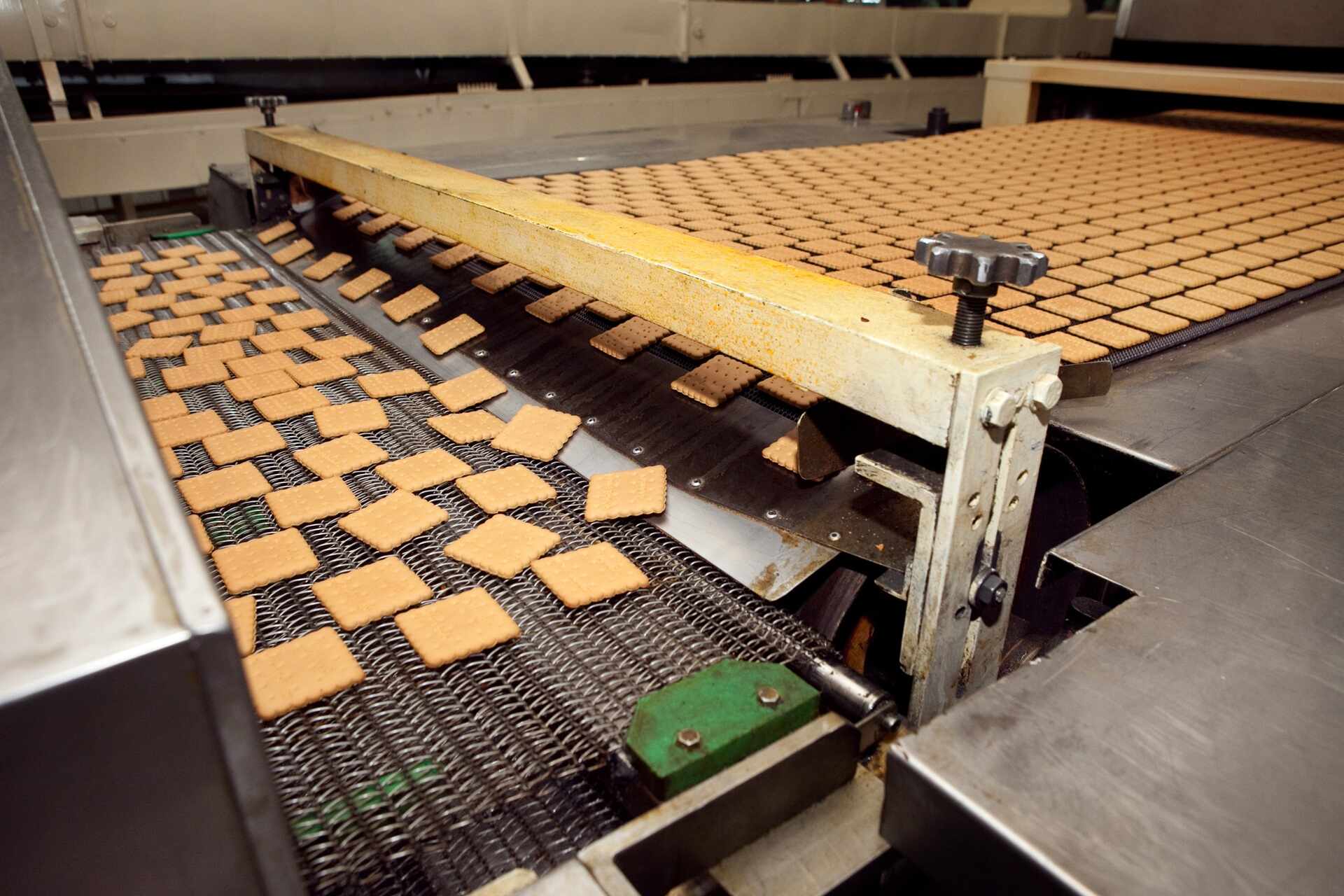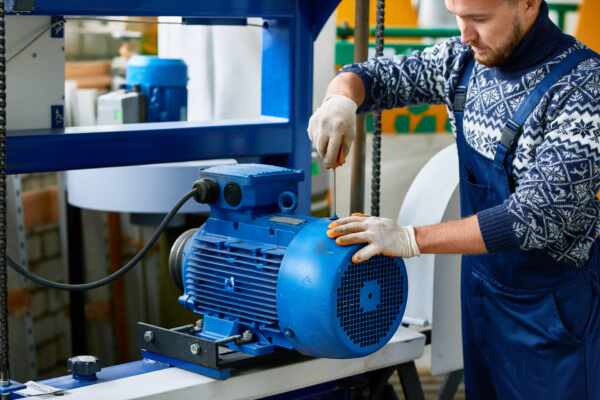The efficiency of your conveyor belt system is a critical component of your food manufacturing operation.
Conveyor belt inefficiencies can hinder productivity, increase operational costs, and escalate food safety risks. Identifying and addressing these inefficiencies is essential for food manufacturers striving to optimise their operations, ensuring long-term competitiveness in this ever-evolving industry.
In this blog, we will delve into the various challenges and inefficiencies affecting your conveyor belt system’s performance in a food manufacturing setting. We will shed light on common issues such as belt misalignment, contamination, and wear and offer actionable strategies to enhance system performance, increase productivity, and, most importantly, uphold stringent food safety standards.
Common Conveyor Belt Inefficiencies in Food Manufacturing
Understanding some of the most common conveyor belt inefficiencies in food manufacturing processes is the first step to effectively addressing these challenges:
1. Misalignment: Conveyor belt misalignment can result in unstable product movement, an increase in product damage, and reduced operational efficiency. Misalignment may be caused by uneven tensioning of the belt, worn components, or incorrect installation.
2. Wear and Tear: Excessive wear on the conveyor belt or components can lead to reduced belt performance, equipment damage, and frequent maintenance or repairs. Causes of wear and tear may include inadequate lubrication, poor belt tracking, or exposure to abrasive materials.
3. Contamination: In food manufacturing, contamination poses a significant risk to product quality and safety. Conveyor belts can accumulate debris, food residue, or other contaminants, potentially leading to product spoilage or cross-contamination between production runs.
4. Inefficient Operation: In some cases, conveyor belt inefficiencies may be the result of suboptimal system design, incorrect belt selection, or poor system integration. These issues can negatively impact throughput, energy consumption, and overall system performance.
Strategies to Enhance Conveyor Belt Efficiency
By implementing these effective strategies, you can combat inefficiencies and enhance the performance of your conveyor belt system in food manufacturing:
Regular Maintenance and Inspections
1. Schedule consistent maintenance and inspections to promptly identify and address issues such as misalignment, wear and tear, contamination, or other inefficiencies.
2. Perform regular cleaning and sanitation procedures to eliminate debris and contaminants, ensuring compliance with food safety standards.
3. Monitor belt tension and tracking to minimise misalignment issues and maximise system stability.
4. Replace worn or damaged components as needed to maintain optimal system performance and extend equipment life.
Optimising System Design and Selection
1. Invest in a well-designed conveyor belt system that caters to your specific food manufacturing requirements, with considerations such as product type, throughput, operational environment, and cleaning protocols.
2. Choose the appropriate conveyor belt material and design to ensure optimal performance in accordance with the specific needs of your food manufacturing operation.
3. Strategically place conveyor belt components and accessories, such as guides, scrapers, and idlers, to enhance system efficiency and hygiene.
4. Integrate energy-efficient drives and motors to reduce energy consumption and promote long-term system sustainability.
Training and Education
1. Train your team to operate and maintain the conveyor belt system effectively, ensuring optimal performance, productivity, and safety.
2. Provide continuous education opportunities to your staff, keeping them up to date with the latest best practices and technology advancements in the industry.
3. Encourage a proactive approach to system maintenance, empowering your team to identify and resolve issues before they lead to costly downtime or food safety concerns.
Invest in Conveyor Belt Upgrades
1. Consider upgrading your conveyor belt system with advanced technologies and features, such as automated tensioning systems, smart belt tracking, and remote monitoring capabilities, to enhance performance, efficiency, and food safety.
2. Explore the possibility of retrofitting or upgrading system components to streamline maintenance procedures, improve energy efficiency, or accommodate changing production requirements.
Final Thoughts
By recognising and addressing common conveyor belt inefficiencies in your food manufacturing operation, you can significantly enhance system performance, boost productivity, and maintain strict food safety standards.
Implementing strategies such as regular maintenance and inspections, optimised system design and selection, staff training and education, and investing in conveyor belt upgrades will empower your business to overcome challenges and achieve unparalleled success in the competitive food manufacturing industry.
Begin your journey towards enhanced conveyor belt efficiency and performance in your food manufacturing operation with Change Parts. Contact our expert team today for personalised guidance, superior conveyor belt products, and steadfast support, enabling you to overcome challenges, optimise your processes, and secure your position as an industry leader in the dynamic food manufacturing sector.




